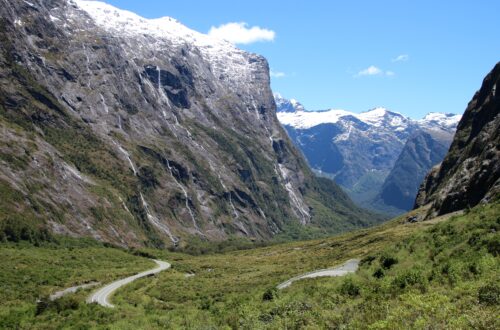Top 3 creepy places
Traveling allows you to stand eye-to-eye with the most beautiful natural, cultural and historic places all over the world. Incredible places which make lasting impressions. Besides those travel destinations which are beautiful – or interesting or otherwise fascinating – there are also less obvious places one can visit. Places that are, well, unusual. Creepy, scary places. Travel destinations which also make lasting impressions, but in their case because they are… eerie.
I am sure there are many of them and I am probably not aware of all of them. But in the course of my traveling I have visited a few destinations which fit very well in this category of less obvious, creepy places. If you’re keen on visiting places like this while venturing out yourself: Here’s my top 3 – so far.

The DMZ between North and South Korea
US President Clinton once called it “The scariest place on earth.” Contrary to its name, the Demilitarized Zone (DMZ) between North and South Korea is actually one of the most militarized areas in the world.
It’s a creepy area, with miles of barbed wire fences and watchtowers and – less visible – minefields in the two kilometers on either side of the border. Not old mines yet to be cleared, no, new mines that will actually explode when you step on them.
Visiting the DMZ means visiting a border between two countries that are formally still at war with each other. The United Nations Command form that you have to sign on arrival is clear: “A visit to the JSA at Panmunjeon will entail entry into a hostile area, and possible injury or death as a direct result of enemy action.” Right…
You are only allowed to photograph at times when permission is explicitly given and you are not allowed to contact or wave at the North Korean military. Even your clothes have to meet a whole list of requirements.
South Korean soldiers stand guard on their side of the border, their North Korean colleagues stand on the other side side, so the two parties look each other in the eye from a few meters distance. You can feel the tension. One misstep and a panic reaction from the other side and hell breaks loose.
The US military on site had a clear warning to all visitors: “don’t accidentally step across the border, because we can’t come over to rescue you.” The DMZ is by far the scariest place I have visited.
Read more about my visit to the DMZ here.
Plokštine nuclear missile base, Lithuania
During a road trip in the Baltic states in 2018, I visited Zemaitija National Park in the southernmost of the three Baltic states, Lithuania. Now, don’t let the designation ‘national park’ fool you, because it’s not the natural environment that makes Zemaitija an creepy place. It’s the former Soviet Union nuclear missile base.
The Plokštine base was built in the deepest secrecy in the 1960s, at the height of the Cold War, deep into the Zemaitija area, far from civilization. While the United States and the Soviet Union were engaged in an arms race, the Russians placed medium-range missiles here, intended to target Western Europe in the event of war.
In the center of the park, behind barbed wire fences, there are four domes that form the tops of the underground missile silos. Through a small door you descend to an underground bunker, where, among other things, the control rooms and the quarters of the military were located. Via various corridors and steel doors you arrive at one of the thirty meter deep missile silos.
It’s an eerie place to walk around, especially when you consider what its purpose was. And that the missiles that were installed here, were directed at Western Europe, including The Netherlands, my home country.
Read more about my trip to the Baltic States here.


The Green Line in Lefkosia, Cyprus
Lefkosia (or Nicosia) is the capital of the Republic of Cyprus. In 1963, after violence between Greek Cypriots and Turkish Cypriots, the British administrators drew a line right through the city. The line became known as the Green Line and was perpetuated after Turkey occupied the northern part of Cyprus in 1974.
Up to this day, the Green Line is an impenetrable buffer zone, heavily guarded United Nations military. The atmosphere in the narrow streets bordering the buffer zone is eerily quiet. Some houses are occupied, others are empty. Streets like the Leoforos Athinas and Axoteas run dead on concrete barricades, metal fences and lots of barbed wire.
Signs warn that entering the buffer zone is strictly prohibited. Within the buffer zone are dilapidated houses that were once inhabited and used to stand on a normal through street. Some barricades are manned by UN soldiers, guarding the creepy no man’s land, while others only have a UN sign and small flags of Cyprus and Greece flutter side by side.
Since 2003 it has been possible for Cypriots to cross the Green Line to visit the other side. The official crossing is at the end of Ledra Street. A sign reminds you that Lefkosia is “the last divided capital” in the world. A 21st century Berlin.
Read more about my trip to Cyprus here.




